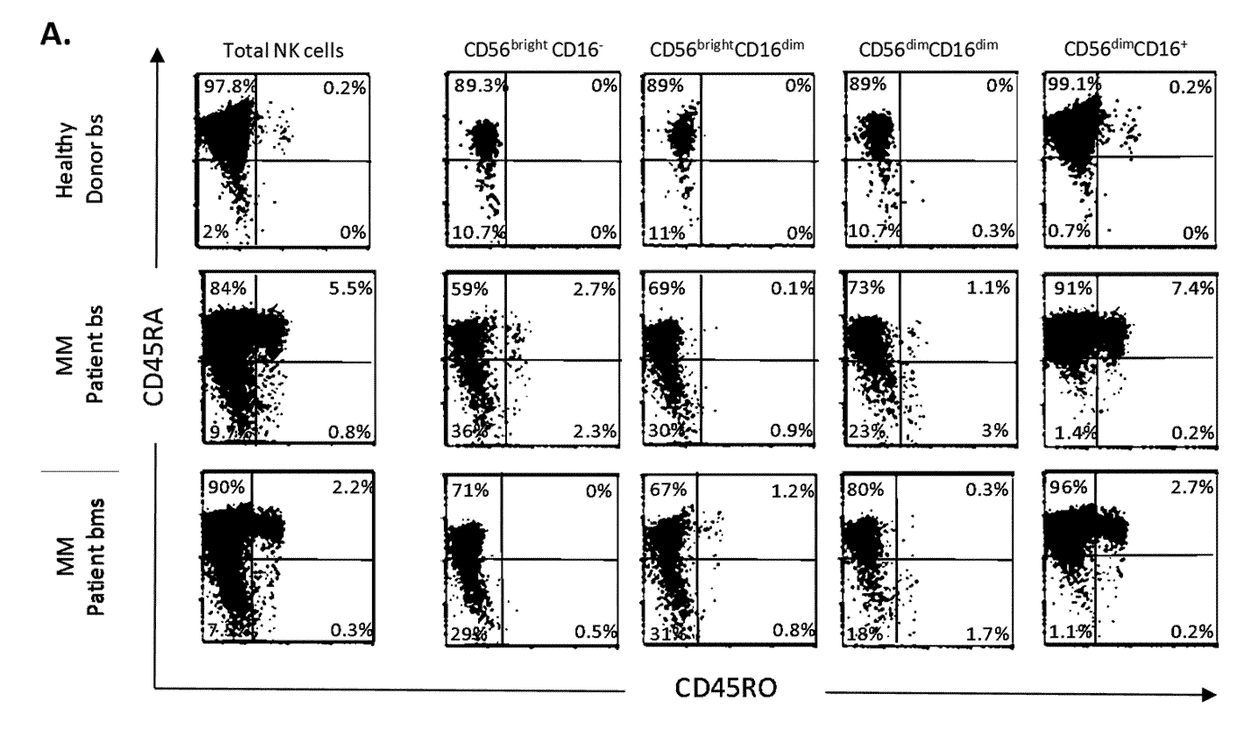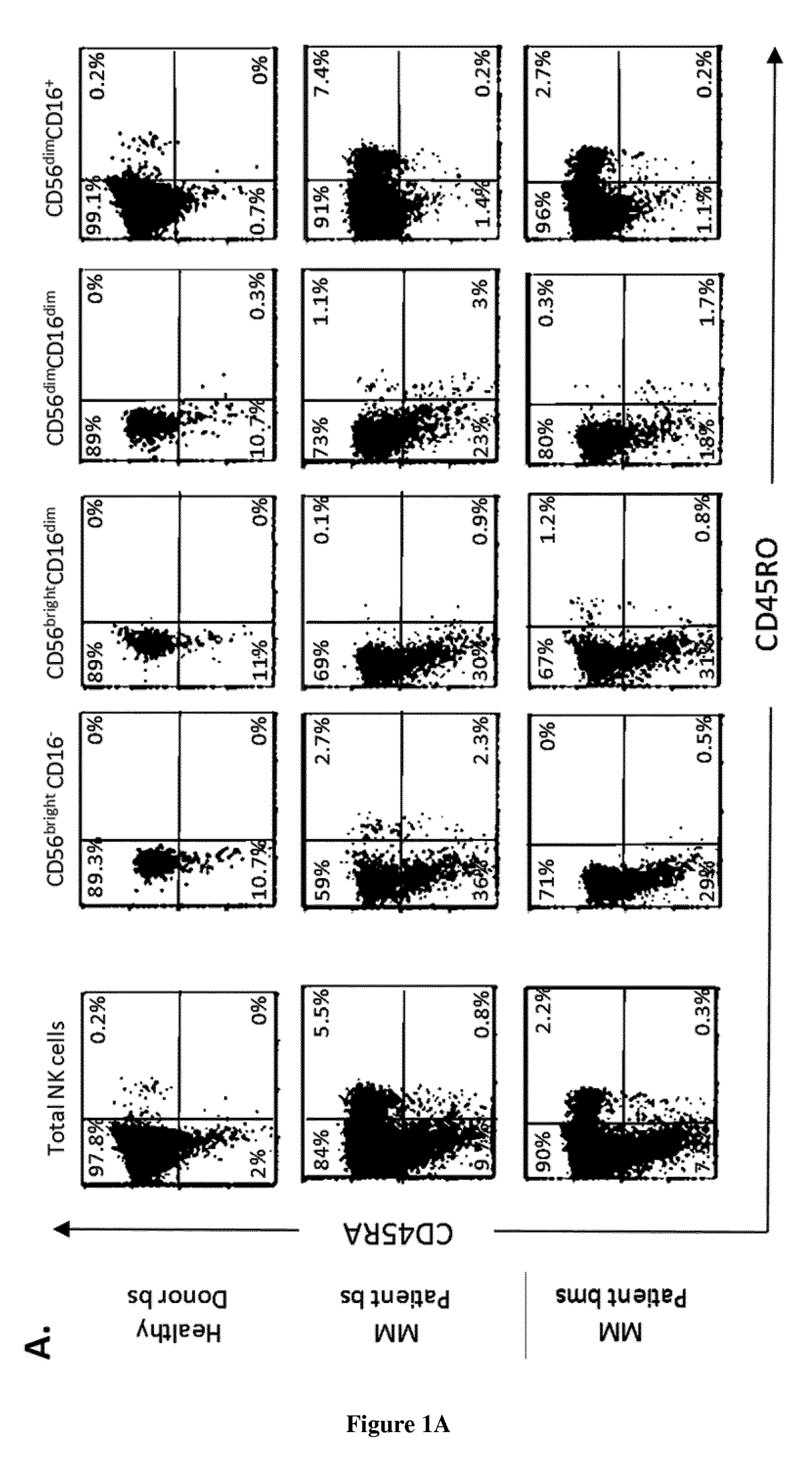Methods for diagnosing hematological cancers
a hematological cancer and hematological cancer technology, applied in the field of hematological cancer diagnosis methods, can solve the problems of difficult in vivo identification of activated nk cells, limited long-term survival of significant number of patients,
- Summary
- Abstract
- Description
- Claims
- Application Information
AI Technical Summary
Benefits of technology
Problems solved by technology
Method used
Image
Examples
Embodiment Construction
:
[0011]The NK cell lymphocyte lineage plays an important role in the antitumor immune response. The full mature CD56dimCD16+ population show the higher cytolytic activity reliable to this function, but little is known about the cells responsible of it. One of the main markers of the lymphocyte lineage is the phosphatase CD45 that is present in two main isoforms in T lymphocytes with the resting T cells expressing the large CD45RA isoform and the effector / memory T cells expressing the short CD45RO isoform. Here the inventors show that NK cells from healthy donors mostly are CD45RAhighRO− whereas 3% of them are CD45RAdimRO−, which are 10 times more abundant in HSC allografted patients and mainly corresponds to immature cells. Hematological cancer patients also show a 5 times increase on this population that is also found in their full mature NK cell compartment. But these cells do not show high degranulating activity. Some NK cells from these patients gain CD45RO expression generating...
PUM
| Property | Measurement | Unit |
|---|---|---|
| volume | aaaaa | aaaaa |
| concentrations | aaaaa | aaaaa |
| strength | aaaaa | aaaaa |
Abstract
Description
Claims
Application Information
 Login to View More
Login to View More - R&D
- Intellectual Property
- Life Sciences
- Materials
- Tech Scout
- Unparalleled Data Quality
- Higher Quality Content
- 60% Fewer Hallucinations
Browse by: Latest US Patents, China's latest patents, Technical Efficacy Thesaurus, Application Domain, Technology Topic, Popular Technical Reports.
© 2025 PatSnap. All rights reserved.Legal|Privacy policy|Modern Slavery Act Transparency Statement|Sitemap|About US| Contact US: help@patsnap.com



